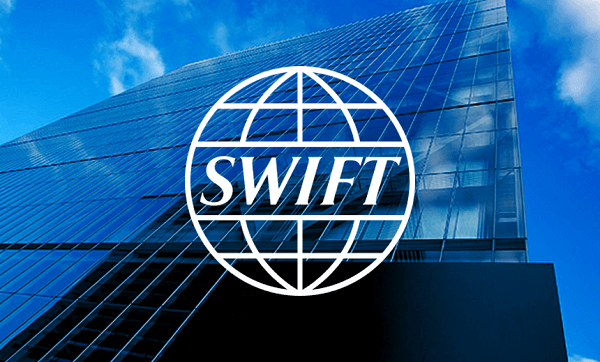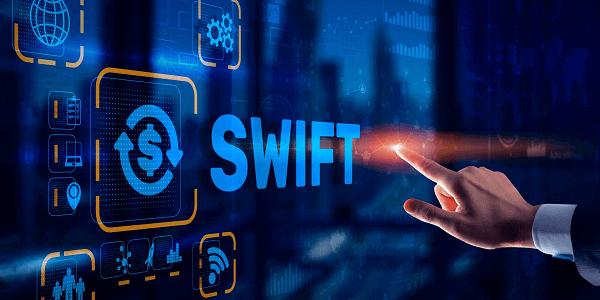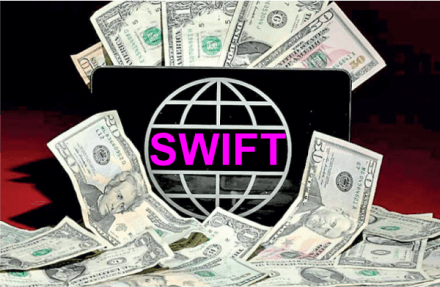How the SWIFT Banking System WorksUnderstanding Swift Banking SystemWant to transfer money overseas? Today, it is easy to send money anywhere in the world by visiting a bank, but how does the process work? The Society for Worldwide Interbank Financial Telecommunications (SWIFT) system is used to manage the majority of international financial and secure transactions. The extensive communications network SWIFT is used by banks and other financial organizations to send and receive information rapidly, precisely, and securely in the form of instructions for money transfers. 
In 2021, the number of SWIFT member institutions increased by 11.4% as compared to 2020, and they jointly sent an average of 42 million messages each day. The SWIFT Transaction InteriorFinancial institutions utilize SWIFT, a messaging system that transmits data and instructions securely using a predetermined set of codes. Despite being a vital part of the global financial system today, SWIFT does not qualify as a financial institution in and of itself because it neither owns nor transfers assets. Instead, its ability to provide effective, secure communication across member institutions is what makes it beneficial. Each connected financial institution is given a unique eight- or eleven-character identification number known as a BIC (bank identifier code) by SWIFT. The SWIFT ID, ISO 9362 code, and SWIFT code are further names for the BIC. Examining the Milan-based Italian bank UniCredit Banca can help you better understand how the code is allocated. UNCRITMM is the eight-letter SWIFT code assigned to it. Here:
Consider a situation in which a client of Bank of America Corp., located in New York, wishes to transmit money to a buddy who maintains accounts at a UniCredit Banca location in Venice. With the account number of his buddy and the precise SWIFT code for the Venice branch of UniCredit Banca, the New York client can visit his local Bank of America and request to initiate a transaction. The UniCredit Banca branch will receive a SWIFT message for a money transfer from Bank of America across the private SWIFT network. Following receipt of the SWIFT message advising UniCredit Banca of the incoming payment, the funds will be cleared and credited to the friend's account in Venice. Despite its success, SWIFT is still only a communications system. SWIFT does not hold any cash or securities, and it does not manage customer accounts. The Era before SWIFTBefore SWIFT, Telex was the only means of message confirmation for cross-border currency transactions. Telex faced challenges because of its slow speed, security concerns, and free message format. To put it another way, unlike SWIFT, Telex did not have a set of codes that were universally used to identify banks and describe transactions. Telex senders had to describe every transaction in a string of words that the recipient had to understand and carry out. As a result, processing times were extended, and several human errors were committed. The SWIFT system was established in 1973 as a solution to these problems. For the purpose of managing a worldwide network that would swiftly and securely convey financial communications, six significant international banks founded a cooperative organization. Why is SWIFT the leader?The Society Financing European (SFE), a group of six big banks with locations in Luxembourg and Paris, launched a "message-switching programme" in the late 1960s, when institutional support for a shared network "began to assume institutional shape", according to the London School of Economics. Then, in 1973, 239 banks from 15 different countries became a part of SWIFT. By 1977, there were 518 institutes spread throughout 22 nations. More than 11,000 institutional members from more than 200 nations and territories were present in 2022. 
Although there are other messaging systems, including Fedwire, Ripple, and Clearing House Interbank Payments System (CHIPS), SWIFT still rules the market. The security of its platform and the way it often produces new message codes to represent different financial transactions may be factors in its success. Initially, SWIFT was used to transmit messages containing simple payment instructions. Even now, it is still used in modern times to convey messages for a variety of operations, such as system transactions, business transactions, treasury transactions, and secure transactions. Swift's most recent report, which was released in January 2022, contains statistics that show that around 44.5% of all SWIFT traffic is still made up of payment-based communications, 50.6% of it is made up of security transactions, and the remaining percentage is made up of traffic from Treasury, commerce, and system transactions. Who utilizes SWIFT?Initially, SWIFT's developers built the network to enhance communication just for Treasury and correspondent transactions. The stability of the message format or design and its great scalability allowed SWIFT to eventually expand to provide services to other sectors, including:
The SWIFT ServicesTo help people and companies perform effective and precise commercial transactions, the SWIFT system provides a wide range of services. Below is a list of a few of the services: ApplicationsSWIFT connections allow for access to a number of applications, such as real-time instruction matching for treasury and foreign exchange transactions, the banking market infrastructure for processing payment instructions between banks, and the securities market infrastructure for processing clearing and settlement instructions for payments, securities, foreign exchange, and derivatives transactions. Compliance ServicesSWIFT offers reporting and tools for Know Your Customer (KYC), sanctions, and anti-money laundering (AML), with a focus on services related to financial crime compliance. Solutions for Messaging, Connectivity, and SoftwareThe provision of a scalable, secure, and trustworthy network for effectively conveying messages forms the basis of SWIFT's operations. SWIFT provides a range of products and services through its numerous messaging hubs, software programmes, and network connections that let its end customers send and receive transactional messages. How does SWIFT generate revenue?Several members together manage this cooperative organization called SWIFT. Members are categorized into classes based on their shareholdings. A one-time joining fee and yearly support fees that vary by member class are paid by all members. 
Furthermore, SWIFT also puts charges according to the size and type of the message sent. There are many price tiers for banks that send out various volumes of messages, and these rates vary depending on how much the bank utilizes the service. As was already reported, SWIFT has added more services over time. These are supported by the enormous data archive that SWIFT keeps flowing. Among these are business analytics, reference data, and compliance services, which give SWIFT access to additional income streams. Issues with SWIFTManually entering instructions would be impractical as the transaction volume handled by most SWIFT customers is relatively high. Therefore, the creation, handling, and transmission of SWIFT messages must all be automated. However, it also costs more and has a higher overhead accordingly. Despite the fact that SWIFT has successfully provided automation software, it does not mean it is free. However, SWIFT may need to look into these issues more deeply for most of its clients in the longer run. Automated solutions in this area typically bring more money for SWIFT and eventually keep clients engaged. Economic Sanctions and SWIFTSince they rely on SWIFT to conduct rapid, easy, secure communication, nations all over the world have an interest in preserving a good image with the organization. SWIFT is a neutral organization that represents the interests of all of the Group of Ten (G10) countries, even though it is controlled by central banks from those nations. Several conversations about using SWIFT membership to penalize members financially have taken place in recent years. For instance, SWIFT was forced to stop providing banking services to sanctioned Iranian organizations after the European Union imposed sanctions on Iran in 2012. Recently in 2022, representatives from the United Kingdom, European Union, United States, and Canada stated that owing to Russia's invasion of Ukraine, some Russian banks will be disconnected from SWIFT. The Bottom LineGlobally, SWIFT continues to rule the processing of transactional communications. Its recent entry into new areas, which includes the delivery of reporting utilities and information for business intelligence, shows its ambition to maintain its inventiveness. Without question, Swift will continue to maintain its market dominance in the short- to medium-term future. |
 For Videos Join Our Youtube Channel: Join Now
For Videos Join Our Youtube Channel: Join Now
Feedback
- Send your Feedback to [email protected]
Help Others, Please Share










